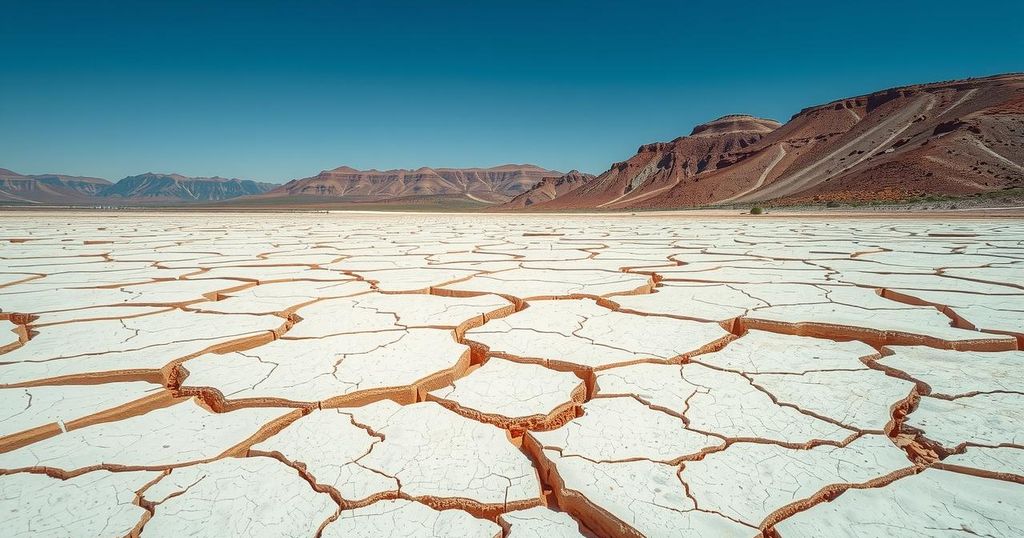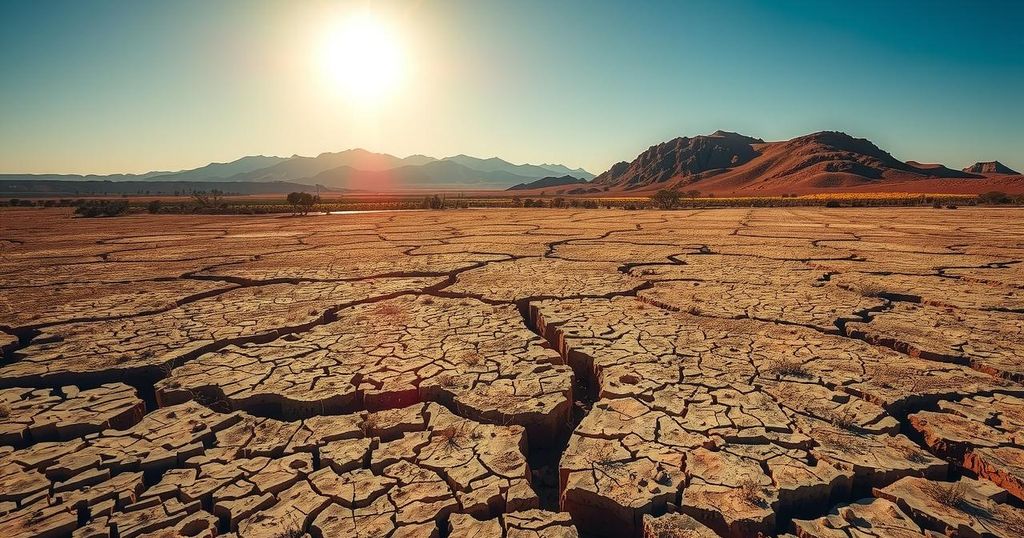Water Crisis Deepens Between US and Mexico Amidst Severe Drought
- San Francisco de Conchos is suffering from a severe drought with over 30 months without rain.
- Rafael Betance indicates that Lake Toronto is critically low, currently at just 14% capacity.
- The 1944 water-sharing agreement mandates water deliveries from Mexico to the US but is now under strain.
- Frustrations from US farmers grow as they claim Mexico has failed to fulfill its treaty obligations.
- The rift highlights the essential need for effective water management and sustainable practices in agriculture.
Residents Face Severe Drought and Water Scarcity
Desperate conditions have led residents of San Francisco de Conchos to plead for rain amid a prolonged drought that has lasted for two-and-a-half years. These locals, gathered on the shores of Lake Toronto, once vibrant, have now seen the water recede alarmingly, exposing a lakebed that is now dry and cracked. One of the residents, Rafael Betance, who has been monitoring Lake Toronto for the Mexican water authority for over three decades, pointed out that the reservoir has reached alarming low levels—measured at 26.52 meters below the high-water mark, representing a mere 14% of its optimum capacity. The community’s desperation reflects a continued reality where water is increasingly precious, and the prayers for rain underscore a sense of urgency as they face conditions of extreme heat and dwindling resources.
Rising Tensions Over Historic Water Agreement
The ongoing water scarcity issue has not only affected the local community but has sparked tensions between the United States and Mexico. Under a historical 1944 water-sharing treaty, Mexico is obliged to send a significant volume of water to the U.S. each year. However, Mexico has struggled to meet these obligations, leading to frustrations across the border. U.S. officials, under the Trump administration, have amplified their warnings, threatening economic measures unless Mexico fulfills its commitments. Following this pressure, Mexico did manage to send some water to the U.S. But, this amount falls far short of the cumulative shortfall of nearly 1.5 billion cubic meters. The implications here are serious; the conflict over water is not merely bureaucratic—it threatens lives, livelihoods, and the agricultural foundations of both nations.
Farmers on Both Sides Share Different Perspectives
On the Texas side of the border, farmers like Brian Jones are feeling the consequences of the water disputes acutely. For three years now, Jones has struggled to irrigate his crops, having only been able to plant half of his expected area due to shortages. He expresses frustration that what he regards as the rightful allocation of water under the treaty is being withheld. Furthermore, Jones has questioned the claims made by Mexican farmers about their actual water availability and has accused them of mismanaging resources. This narrative of blame is echoed by fellow Texas farmers, who advocate for more sustainable and efficient agricultural practices. However, across the border, the narrative from farmers in Chihuahua paints an entirely different picture—one where drought has plagued their region so severely that domestic needs must take precedence, presenting a clear clash of interests.
Agricultural Adaptations Amid Water Crisis
As the agricultural landscape of closely situated communities hangs in the balance, the future of farming appears bleak without immediate action. Mr. Jaime Ramirez emphasizes the importance of modern irrigation methods, which significantly reduce water waste compared to traditional flooding methods. He advocates for others in his community to adopt similar systems to maximize the limited water resources available. However, not all farmers are able to transition due to economic constraints. Mr. Ramirez highlights an existential threat in their region, cautioning that without rain, the future of agriculture is at risk. At the same time, Texan farmers maintain a deep-rooted belief in the efficacy of the 1944 treaty, sensing anger and frustration as they contend with the ramifications of its challenges today.
Future Dependencies on Collaboration and Understanding
In summary, the intertwined fates of Texas and Northern Mexico hinge on the delicate balance of water management and international relations. As residents pray for rain, it is apparent that both communities are in a precarious situation where climate-induced scarcity meets age-old agreements that no longer reflect current realities. Across borders, the pressing demand for solutions stands out—whether through diplomacy or the adoption of better agricultural practices. The future of farming in places like San Francisco de Conchos and the Rio Grande Valley depends not just on weather patterns, but also on cooperation, understanding, and the will to adapt.
The ongoing water crisis between the US and Mexico demonstrates the complexities of territorial water rights and the impact of climate change on such agreements. As drought conditions worsen, tensions escalate, and communities on both sides of the border grapple with the realities of insufficient water supply. A need for better cooperation and sustainable practices is urgent as both nations strive to navigate these challenging waters.




Post Comment